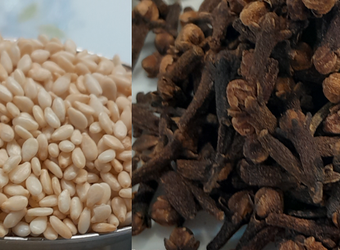Lettuce
Garden lettuce or cultivated lettuce: -
A type of plant that follows the genus of lettuce from the Asteraceae family or a broadleaf compound. Lettuce is a vegetable whose leaves are eaten raw or in salads; it is rich in nutrients, especially vitamins, salts, oils, and proteins.
The ancient Egyptians were the first to grow lettuce to eat it. Lettuce spread to the Greeks and then the Romans through trade with Egypt, and the Romans were the ones who called it (lotus), and from it, many European names such as English and French were derived.
By AD 50, the lettuce had spread throughout the Near East and Europe; many types appeared and were described by writers in their medieval writings, including many medicinal plants.
The period from the sixteenth to the eighteenth century witnessed several types of lettuce in Europe. In the mid-eighteenth century, the common types of lettuce appeared nowadays. Europe and the United States dominated the global trade in lettuce in the 2000s when lettuce became a sought-after commodity worldwide.
Lettuceis a hardy vegetable and is usually grown seasonally; it needs relatively low temperatures to not bloom early. Cultivated lettuce can tolerate nutrient deficiencies, insect and mammalian parasites, and many fungal and bacterial diseases.
Grown lettuce readily crosses with other species of the same family and with other varieties of the genus of lettuce, and farmers who want to preserve the purity of the seeds hate this. Biologists are turning to it to extend the gene pool of lettuce varieties.
Global production of lettuce in 2017 was about 27 million metric tons, and China alone produced more than half of this amount.
Lettuce is often used in salads, as it is used in other types of foods such as soups, sandwiches, and wraps. One form of lettuce is grown for its stems that are eaten raw or cooked. Lettuce is a good source of vitamin A and potassium, and it is a low-quality source in comparison with some other nutrients and vitamins.
Despite the many benefits of lettuce, it may become a source of bacteria, viruses, and parasites, if it is contaminated with any of the pollutants, and among the diseases that humans get from eating contaminated lettuce: Escherichia coli and salmonella. Cultivated lettuce had a historical religious and medicinal significance (in addition to its nutritional importance) during the long centuries of cultivation.
Lettuce has four types: -
Romaine lettuce:- It is lettuce with long leaves, crunchy and sweet, and famous for its use in Greek salads.
Lettuce with green and red leaves.
Head lettuce:- It is with large, soft, and sweet green leaves.
Snow lettuce:- It is white on the inside, has a crisp texture, and has a mild taste that can be used in juices.
The most important properties of lettuce
Lettuce is an indispensable vegetable because it helps to feel full if it is a diet plan. Lettuce is a vegetable that is high in fiber, minerals, and vitamins.
Lettuce is also one of the most common vegetables and is used in high proportions in many countries.
Lettuce exists in more than one type and shape, and all of its types and shapes have great nutritional benefits.
Lettuce is a vegetable that is eaten raw because it does not need to be cooked or exposed to fire, so it is one of the vegetables that can retain its nutritional value for as long as possible.
Lettuce contains many important nutrients, including water, fats, calories, proteins, carbohydrates, sugars, calcium, magnesium, iron, vitamins, sodium, and zinc.
Benefits of eating lettuce every day
If people knew the benefits of eating lettuce daily, it would not be without a table after the day, as it is one of the most useful leafy vegetables for all family members, and among the most important benefits of lettuce are the following:
Prevent cancer because lettuce contains powerful antioxidants that prevent cancerous tumors.
Strengthening the immune system because it contains vitamin "C" and vitamin "A" antioxidants, which stimulate the immune system and strengthen it to confront infection and viruses.
Maintaining a healthy heart, the benefits of eating lettuce daily helps protect the heart from diseases due to the antioxidants that reduce harmful cholesterol in the blood, which protects the heart and blood vessels from many problems.
Reduce blood pressure
lettuce is rich in potassium, which is important for controlling blood pressure levels and protecting against strokes.
Fights free radicals, as lettuce contains antioxidants that protect the body from free radicals and aging signs.
Protection from dehydration, eating lettuce helps protect the body from dehydration because it contains water and mineral salts, which are necessary to moisturize the body and prevent fluid retention.
Activating the kidneys, eating lettuce stimulates the work of the kidneys and diuresis, and it prevents the formation of stones.
Maintaining the health of hair, eating lettuce is useful in maintaining the health of hair, preserving its smoothness and shine, and protecting it from split ends and falling.
Benefits of lettuce for the skin
The benefits of lettuce on an empty stomach, especially for the skin, are many. It contains a large percentage of water that helps the skin to:-
Moisturizing and refreshing the skin.
Delays the appearance of early signs of aging in women.
It is used to treat skin problems by soaking it in water for 4 hours, then washing the face with it daily and wash it with water.
Benefits of lettuce for hair:
According to the University of Maryland Medical Center, many hair disorders and problems may be caused by nutritional deficiencies and inadequate intake of certain elements, especially iron, zinc, and vitamins A and S.
Lettuce is a source of all these elements, so eating it may enhance your hair, strengthen it, and treat problems with its loss, especially with vitamin K and vitamin E. Some studies indicate that people, who eat lettuce, may be less likely to have premature graying because lettuce is a good potassium source.
Lettuce also provides you with many minerals that are very important for maintaining the health of skin, nails, and hair because it contains 9% phosphorous and 8% silicon, and sulfur that are enough to meet all the needs of your body.
To get the most benefit and at a special time, you can eat a mixture of lettuce, watercress, spinach, orange, and carrot juice daily.
Other benefits of lettuce
The benefits of lettuce are not only limited to the previous benefits, but it also has many other benefits, such as:
Diuretic.
Helps hydrate the body and revitalize cells.
It treats asthma and bronchitis.
It prevents premature aging.
Helps treat and relieve cough.
Lettuce contains antioxidants that protect against cancer.
It helps sleep.
Improves memor
Side effects and recommendations
There are no specific recommendations regarding the recommended portion of lettuce because it has no clear and negative health effects.
However, it is generally recommended to regulate their intake and calculate their portions within the daily allowance for vegetables.
It is usually advisable to wash lettuce well before eating it because lettuce is one of the most contaminated crops with fertilizers, soil, or microbes.
Heart patients and those taking anticoagulant medications are advised to moderate their consumption of lettuce, because vitamin K may contradict these medications.





Related Articles